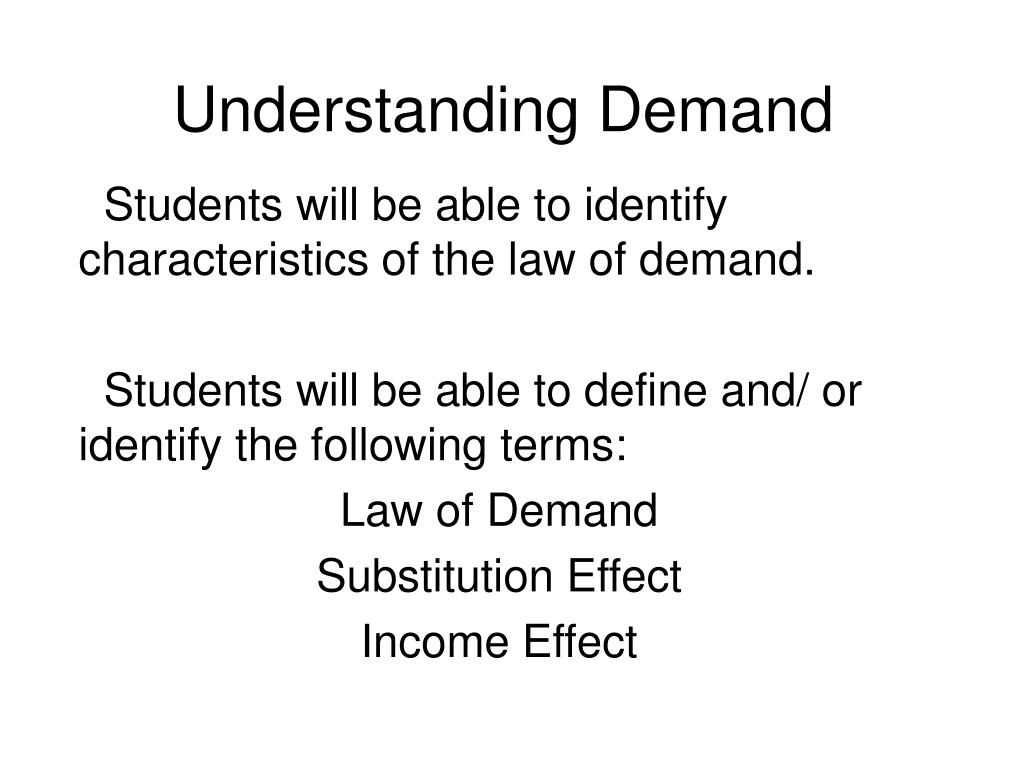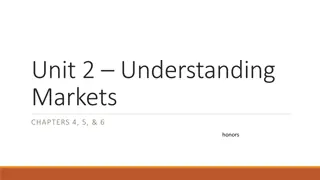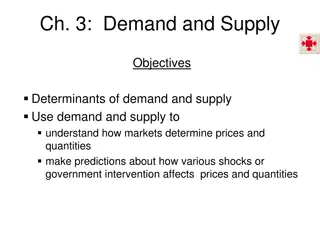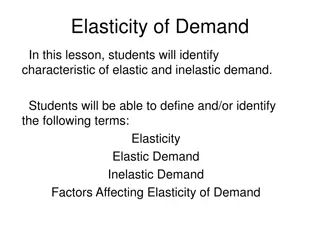Understanding the Law of Demand and Its Effects
Characteristics of the law of demand, definitions of key terms like Law of Demand, Substitution Effect, and Income Effect are explored in this content. The relationship between price and quantity purchased, consumer behavior in response to price changes, and the income effect on purchasing power are discussed. Visual aids further elucidate these economic concepts.
Download Presentation

Please find below an Image/Link to download the presentation.
The content on the website is provided AS IS for your information and personal use only. It may not be sold, licensed, or shared on other websites without obtaining consent from the author. Download presentation by click this link. If you encounter any issues during the download, it is possible that the publisher has removed the file from their server.
E N D
Presentation Transcript
Understanding Demand Students will be able to identify characteristics of the law of demand. Students will be able to define and/ or identify the following terms: Law of Demand Substitution Effect Income Effect
Do Now: 2/25/20 What do you think is the definition of supply and demand?
Look at this demand curve. What happens to quantity purchased as prices rise?
The Law of Demand The law of demand states that consumers buy more of a good when its price decreases. Conversely, consumers buy less of a good when its price increases. Consumers love low prices.
The Law of Demand The law of demand is the basic principle that consumers buy more of a good when its price decreases and less of a good when its price increases.
Its obvious, isnt it? Consumers love low prices.
The Substitution Effect One reason that the law of demand exists is the substitution effect. The substitution effect occurs when a consumer reacts to an increase in a good s price by buying less of that good and more of a similar yet cheaper good. When the price of orange juice rises, consumers substitute cheaper apple juice for orange juice.
The Income Effect The income effect is the change in consumption resulting from a change in income. In other words, when prices rise, your money buys less. Higher prices reduce your purchasing power.
Lower prices allow consumers to increase demand. Lower prices increase consumers purchasing power.
A demand schedule records the quantity demanded at various prices.
A demand schedule can easily be converted to a demand curve.
Economists love graphs because graphs provide easy understanding of economic concepts.
If a picture is worth a thousand words, a graph is worth even more.
Questions for Reflection: State the law of demand. Provide an example of the substitution effect. How does the income effect lead to the law of demand? What is a demand schedule? What is a demand curve? Why do economists love graphs?























